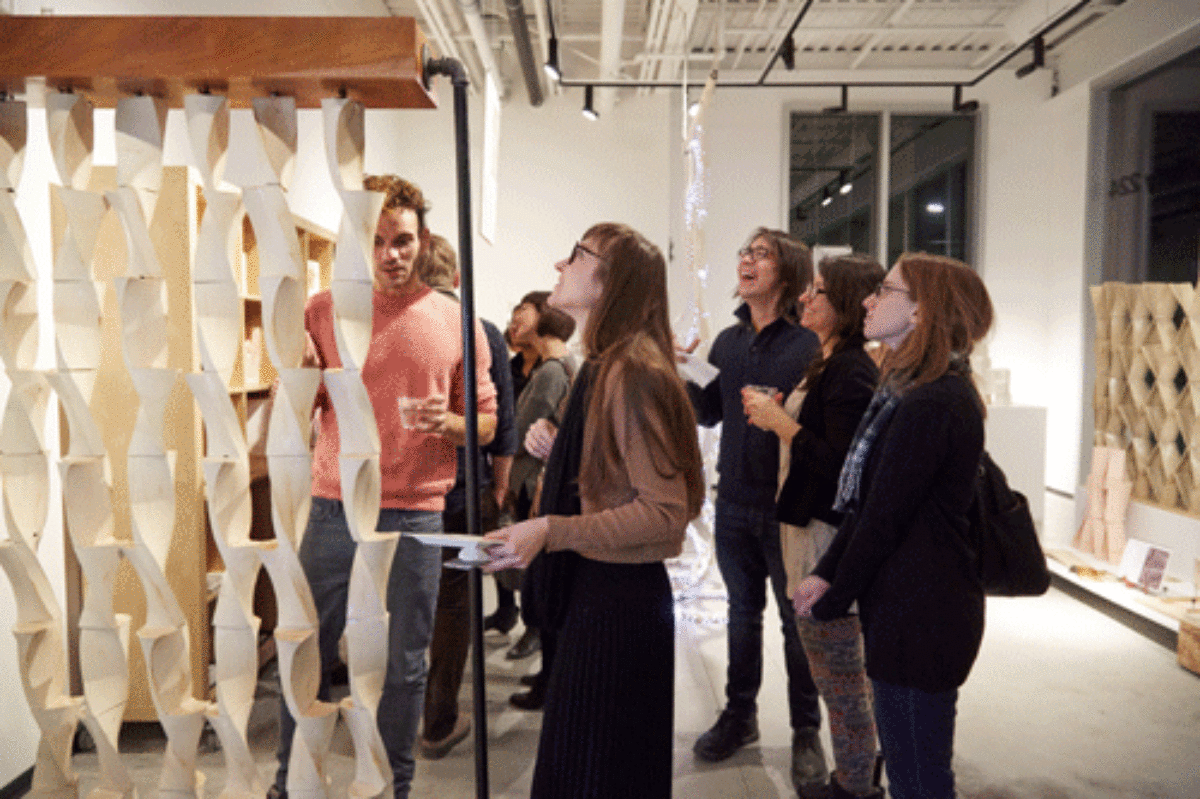Students at the Harvard University Graduate School of Design teamed up with the Harvard Ceramics Program to design innovative techniques for ceramic materials. Led by Leire Asensio-Villoria, lecturer in architecture and landscape architecture, and DDes candidate Felix Raspall, the “Ceramic Materials Formations” exhibition at Gallery 224 in Allston showcased the students’ exploration of fabrication techniques and the behavior of different ceramic materials. Under the guidance of the Harvard Ceramics Program, GSD students used these techniques to inform the construction of ceramic prototypes that could be used in production.
In particular, the course looked at how the historical application of ceramics informs how the materials could be used innovatively to cool an outdoor space in a hot climate. “In Spain, pots cool air before it enters a building; the students wanted to design the reverse,” said Asensio-Villoria.
Taking inspiration from Spanish and Islamic architecture, one team designed a porcelain outdoor acoustic space. Aziz Barbar (MDes ‘16) was interested in taking the ceramics course because of its use of robotics in the design process. Barbar pointed to the advantages of precision when using robotics, “we can bring a modern design edge to materials that have been used for centuries.”
A second project exhibited a hollow terracotta wall that would fill with water and cool the surrounding air. After selecting terracotta for its ability to absorb 20% of its weight in water, students experimented with changing the firing process in order to affect the porosity of the material. GSD student Alexander Jacobson (MArch 1, ’15) explained the process behind the wall’s design: “After we visited the engineering school to photograph the airflow and rate of evaporation—a process known as the Schlieren Test—we knew we could use robotics and modern technology to build on the historical precedence of terracotta. It requires a lot of energy to turn water into vapor, so by evaporating water in a terracotta wall the surrounding temperature cools as well.”
The Head of Studio, Kathy King, and the Director of Operations, Shawn Panepinto noted the achievement of the students, “it’s a journey to go from knowing very little about ceramics to making prototypes in such a short time,” said King at the exhibit’s closing reception. Assistant Dean for Communications at the GSD, Ben Prosky, added, “the expertise of the staff here at the ceramics studio has helped the students so much.”
The student’s work was exhibited by the Harvard Ceramics Program at Gallery 224 in Allston, which holds exhibitions that showcase the work of emerging and established ceramic artists.
